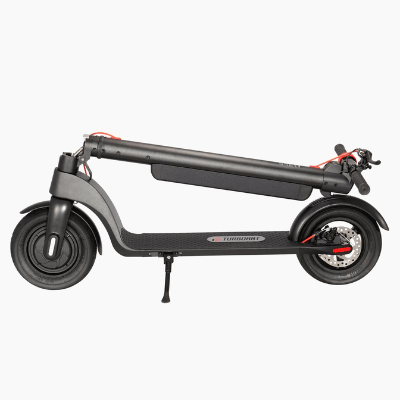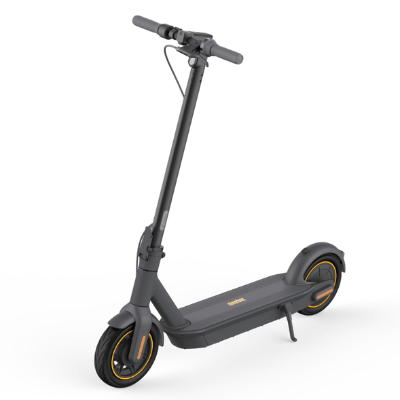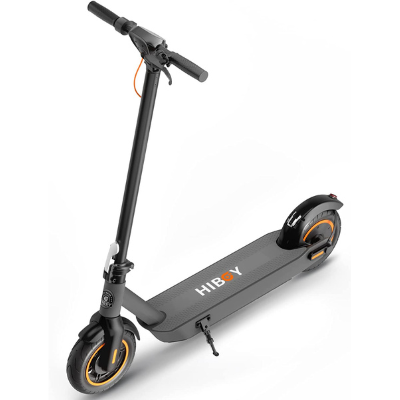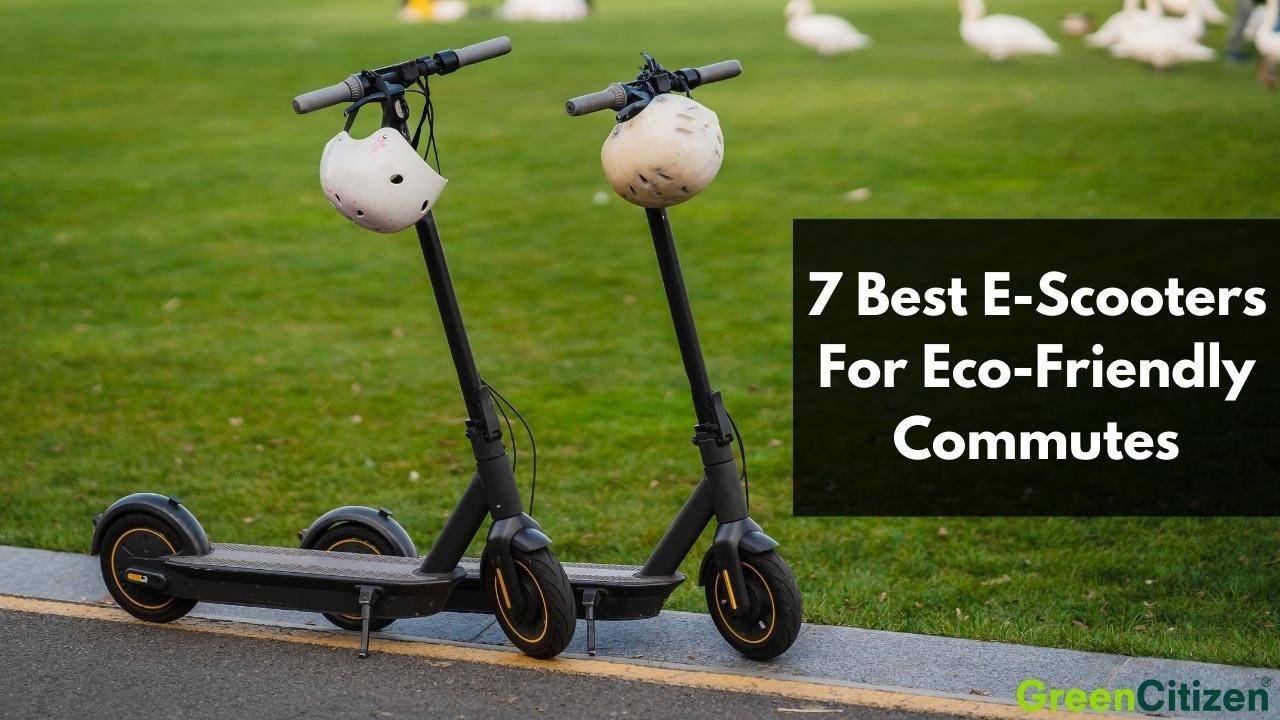Electric scooters aren’t just a fun upgrade from walking — they’re a critical tool for building cleaner, quieter cities. But let’s face it: not all e-scooter brands are created equal. Some flood the market with low-cost, throwaway products. Others? They’re revolutionizing urban mobility with sustainability at their core.
In this guide, we’re spotlighting brands that don’t just sell scooters — they shape eco-friendly lifestyles. We’re digging into the ethics behind the engineering, the life cycle of their batteries, the transparency of their supply chains, and how their designs help reduce waste and emissions.
If you’re looking to invest in a ride that lasts — and actually helps the planet — you’re in the right place. Whether it’s swappable batteries, repairable parts, or clean manufacturing practices, these are the e-scooter brands leading the way toward smarter, more sustainable micromobility.
Best E-Scooter Brands for Sustainable Commuting
1. TurboAnt: Commuter Simplicity with Sustainable Potential

TurboAnt has quietly earned a reputation for building commuter e-scooters that are simple, tough, and surprisingly forward-thinking. With a focus on removable batteries and straightforward design, the brand appeals to urban riders who care about both performance and long-term usability.
The real sustainability win? Modularity. TurboAnt’s swappable batteries reduce the need for full product replacement, a huge advantage in cutting down e-waste. Instead of tossing an entire scooter when the battery dies, riders can simply swap it out and keep riding.
While the company doesn’t lead with green branding, its product philosophy reflects eco-conscious design. There’s minimal fluff, just durable builds, decent repairability, and a rider-first mindset.
TurboAnt could level up by launching a battery recycling program or publishing transparency reports on its supply chain. Still, its current approach makes it one of the more practical, sustainable options in the consumer-grade e-scooter space.
2. Gotrax: Micromobility for the Masses

Gotrax has become a go-to brand for reliable, entry-level e-scooters that don’t compromise on quality. Designed for short commutes and everyday riders, their products are accessible and surprisingly robust for the price point.
Sustainability isn’t just a buzzword here — it’s embedded in the design. Gotrax scooters use aerospace-grade aluminum, solid tires that reduce waste from flats, and brushless motors that balance performance with energy efficiency. These choices help reduce repairs and replacements — meaning fewer scooters end up in landfills.
Their minimalist packaging and multi-year warranty encourage product care over product turnover — rare in this fast-paced segment. Gotrax doesn’t have a flashy sustainability report (yet), but their focus on durability and affordability makes clean commuting more achievable for the average rider.
For anyone new to e-scooters or making the switch from car commutes, Gotrax is an eco-friendly gateway brand that actually walks the walk.
3. Segway: Innovation Meets Circular Thinking

Segway is the OG of personal mobility — and they’re not just coasting on that legacy. With the Ninebot series and other smart mobility platforms, the brand continues pushing boundaries while weaving sustainability into its core engineering.
Regenerative braking, energy-dense lithium batteries, and app-integrated diagnostics are more than just flashy features — they’re ways to extend lifespan and minimize waste. Segway’s scooters are often used in ride-share fleets, proving their ruggedness and scalability in urban environments.
One standout feature is Segway’s support for component-level repairs, which keeps more units on the road and fewer in landfills. Their global reach also allows them to tap into circular economy strategies — refurbishing or upgrading units instead of discarding them.
There’s still room to grow: publishing carbon metrics or improving recycling pathways could take Segway from sustainability-conscious to true industry leader. But with their innovation record and durability-focused design, Segway is already setting the pace.
4. Hiboy: Built to Last, Built for More

Hiboy isn’t just another scooter brand — it’s a lifestyle pick for commuters and adventure-seekers alike. Their lineup blends rugged construction with smart commuter features, giving riders a reliable alternative to short car trips.
Where Hiboy shines is durability. Strong suspensions, puncture-resistant tires, and dual braking systems mean fewer breakdowns, which means less turnover. In an industry plagued by cheap, short-lived scooters, Hiboy’s commitment to longevity is a refreshing shift.
Their packaging is compact and streamlined, customer service is reliable, and their kids’ e-scooter line helps introduce green transport habits from an early age. While Hiboy hasn’t made big claims around ESG or emissions, their performance-first engineering leads to naturally more sustainable products.
To go further, the brand could offer repair guides, spare part kits, or a recycling initiative. But even now, Hiboy helps riders swap gas for clean rides — with style, comfort, and fewer environmental trade-offs.
What To Look For When Buying an E-Scooter?
Power & Drive
E-scooters have motors rated from 80 to 12,000 watts. As this guide includes the best option for sustainable commuting, I only included those with 300 watts and above.
Frankly, I wouldn’t advise buying anything weaker than 250 watts so you can negotiate small hills and slopes as well. Especially if you’re considering electric scooters for adults.
Some of these scooters, such as the UNAGI Model One E500, have dual motors or two-wheel drive which is the best option if you live in a town with a lot of hills. However, most of the e-scooters reviewed here have either a rear-wheel or front-wheel drive.
Let’s quickly go over the pros and cons of each.
Front-wheel drive
Good
Bad
- Cheap to manufacture
- Better overall traction and power use
- Compact & lightweight
- Front-heavy
- Difficult to turn fast corners
- Less traction uphill
- Prone to tipping over downhill
Rear-wheel drive
Good
Bad
- Cheap to manufacture
- Proven and tested design
- Better weight distribution
- Better traction uphill
- Safer downhill
- Easier to oversteer
- The worst for handling wet & slippery surfaces
Two-wheel drive
Good
Bad
- The best weight distribution
- Excellent stability & traction
- Fast acceleration
- The best for wet and slippery surfaces
- Prone to understeering
- The heaviest
- The most expensive to manufacture
Range and Battery
All e-scooters on this list have lithium-ion batteries as they charge faster and provide more miles per charge. Less expensive and less powerful scooters for kids might still use lead-acid batteries.
The math is simple here: the larger the battery, the more capacity a scooter has.
When it comes to range, the Gotrax scooter is a winner here with 45 miles on a charge (in ideal road conditions, and depends driver weight). Keep in mind that manufacturers’ claims are often more optimistic than real-life numbers.
Speed
The fastest serially produced e-scooter can reach speeds up to 75 mph, but here we’re interested in everyday usability and more importantly — legality.
The best electric scooters for commuting reach between 15 and 20 mph, which is within the law in most US states and EU countries. Your local laws can vary, together with the kinds of roads and lanes you can use.
Actual speed depends on the state of tires, rider weight, and battery charge.
Brakes
E-scooters come with four brake types:
- Electric or regenerative — typical of electric vehicles, these brakes convert part of the braking force back into energy for charging the battery.
- Foot brakes — require the rider to step down on the rear fender to create friction and slow down.
- Drum brakes — cheaper to manufacture and last longer than disc brakes as they have a larger friction surface.
- Disc brakes — effective and reliable brakes with thought stopping power, especially downhill.
Tires
Electric scooters for adults run on pneumatic (filled with air) or airless tires.
The pneumatic tires provide better shock absorption and offer more stability and traction.
However, airless tires, such as the ones on the UNAGI Model One E500 require less maintenance and are puncture-proof. Airless tires also provide better responsiveness and road feel.
Weight and Payload
E-scooters can weigh from 15 pounds to 155 pounds in some extremes, but here I focused on scooters for everyday use and leisure. Those you can fold and carry up into the office or put in the trunk just like my neighbor.
If that’s an issue for you, consider the lighter models such as the AnyHill UM-1 or Segway Ninebot ES2.
As the useful payload i.e. the rider weight is considered if you want to play safe, go for the TurboAnt X7 Pro E-Scooter or the UNAGI Model One E500.
Final Thoughts: E-Scooter Brands That Put the Planet First
Choosing an e-scooter isn’t just about speed or style — it’s about sustainability, longevity, and the kind of future we want to build. Brands like TurboAnt, Gotrax, Segway, and Hiboy are shaping that future by producing scooters designed to last, reduce emissions, and promote clean commuting.
While none of these companies are perfect, each shows promising signs of ethical manufacturing, repairable design, and responsible mobility. Whether you’re after modular batteries, regenerative braking, or just a solid ride that won’t fall apart in six months, these brands are putting in the work to make micromobility more sustainable — and more accessible.
In a world that’s racing toward greener cities, riding electric isn’t just a lifestyle — it’s a commitment. And these brands? They’re riding in the right direction.


